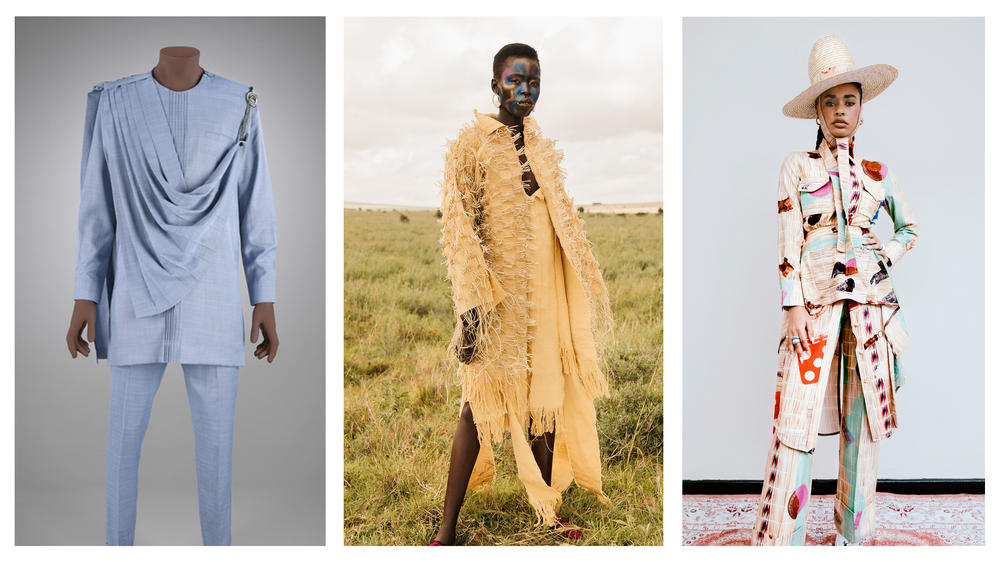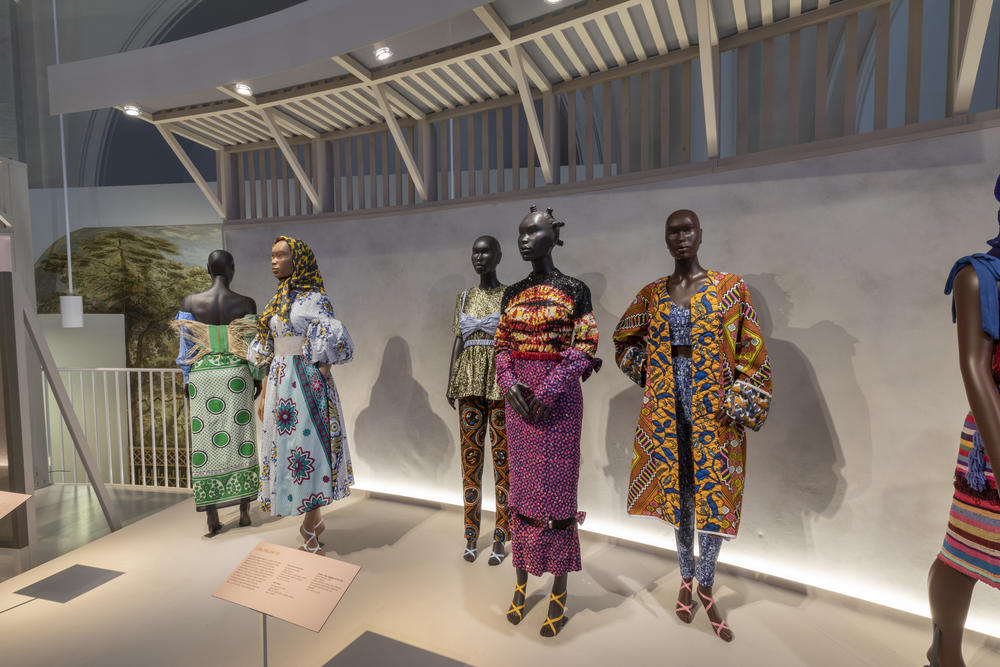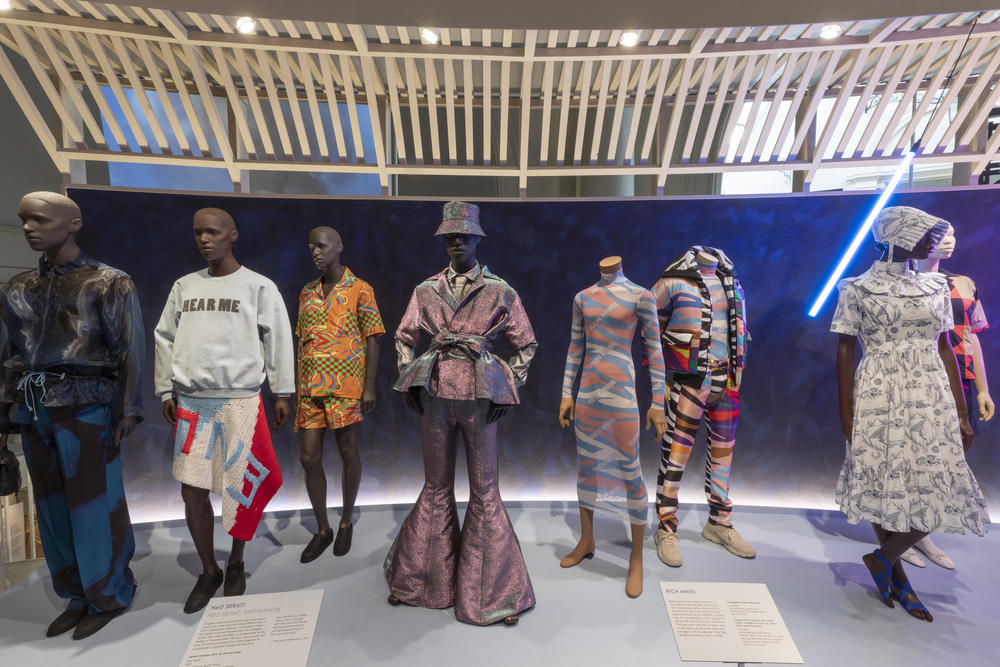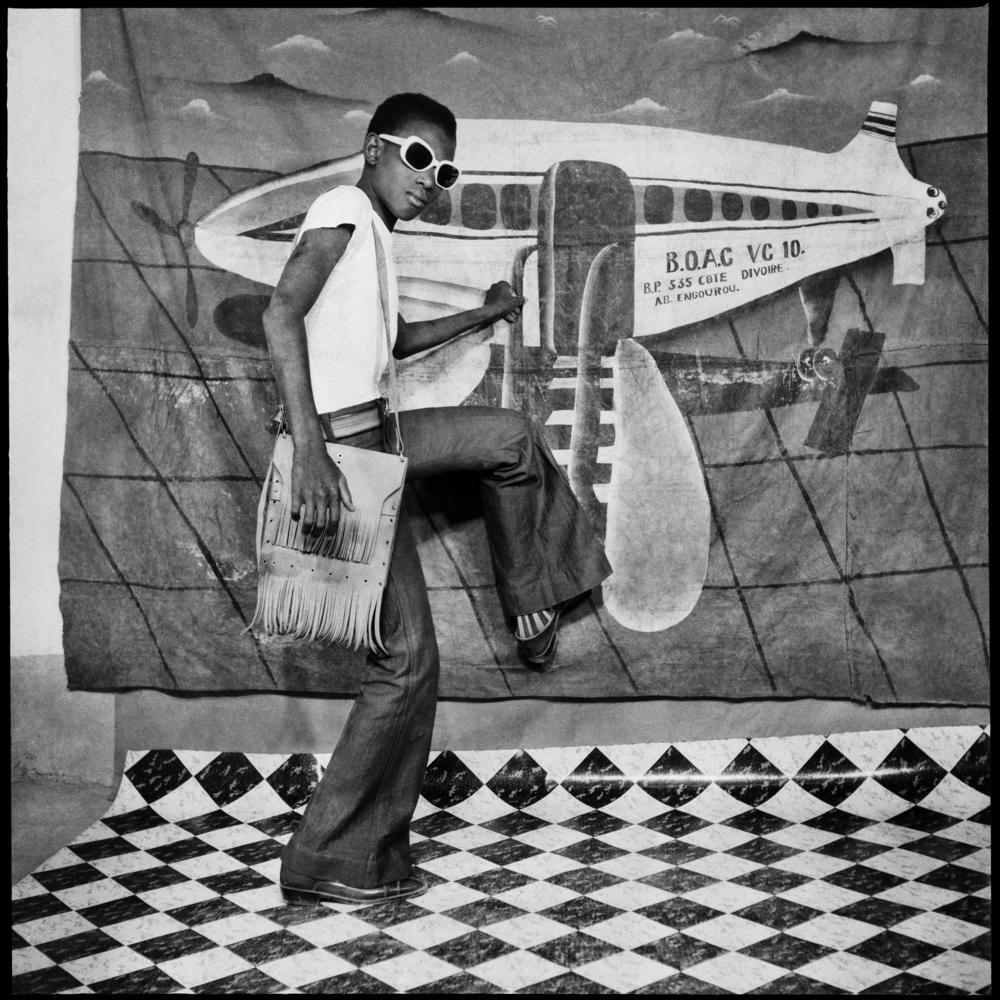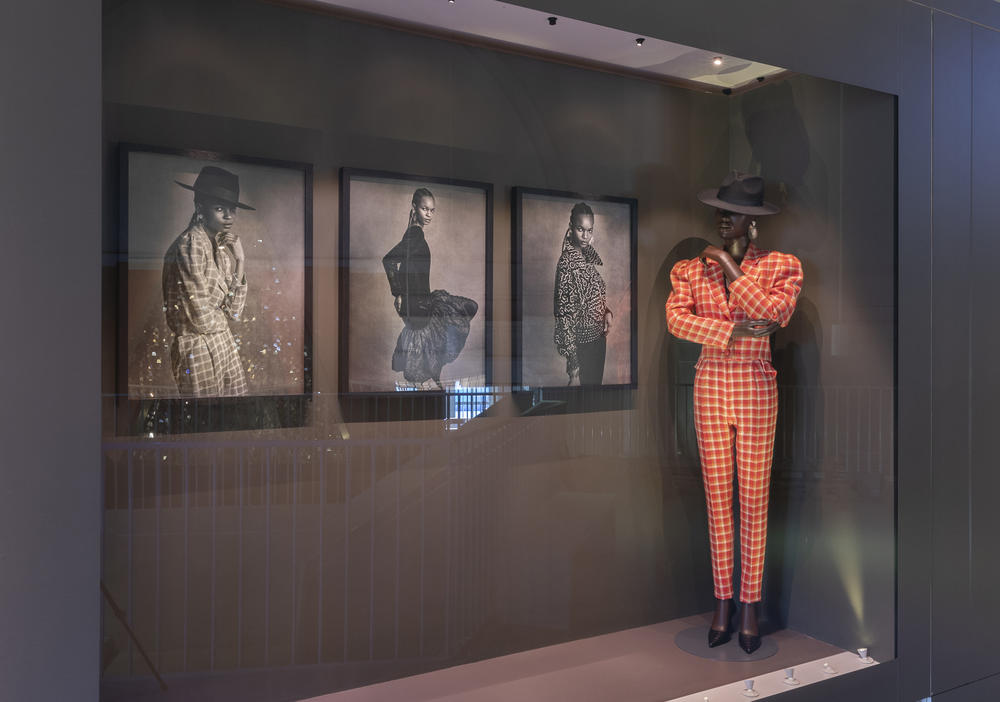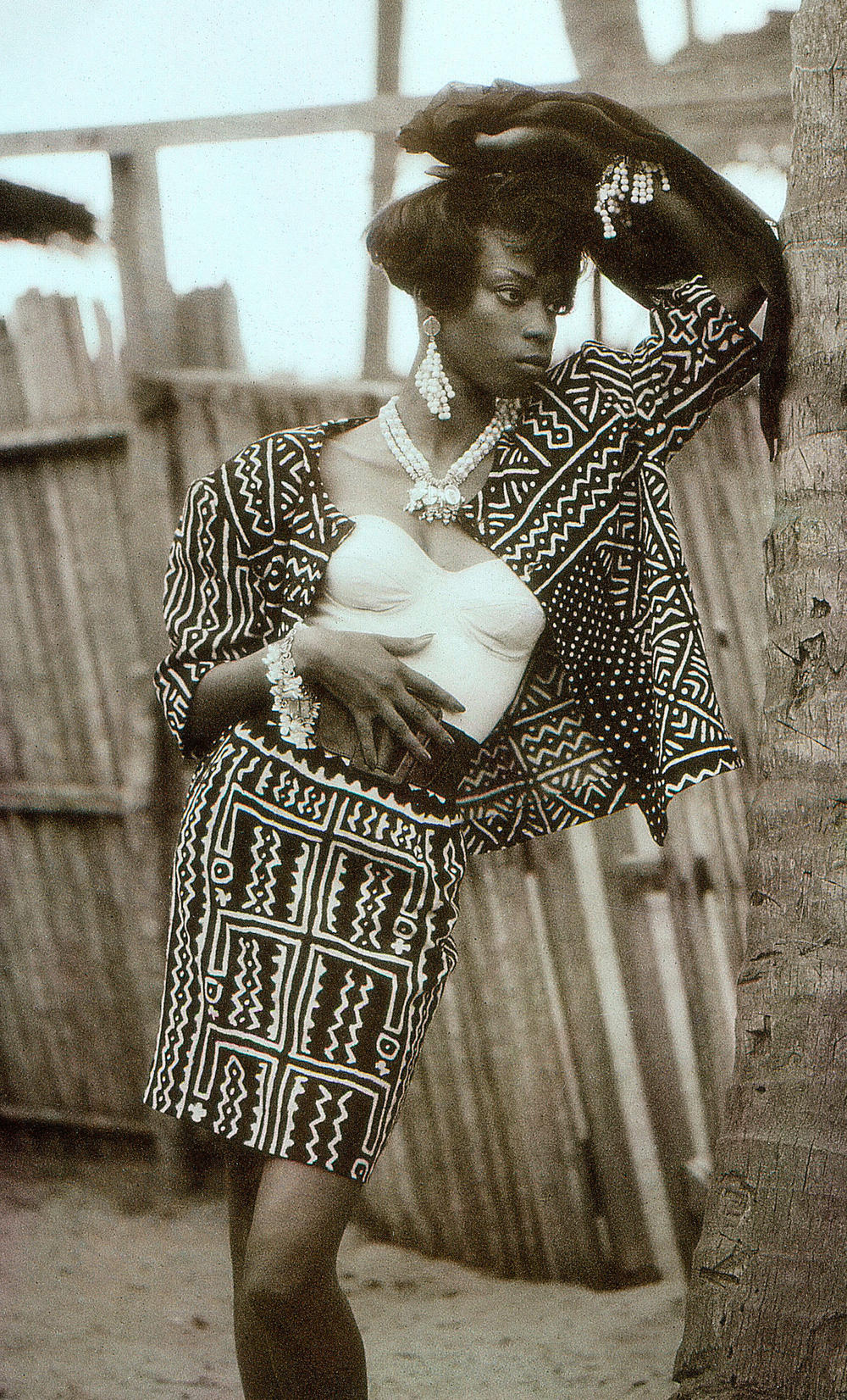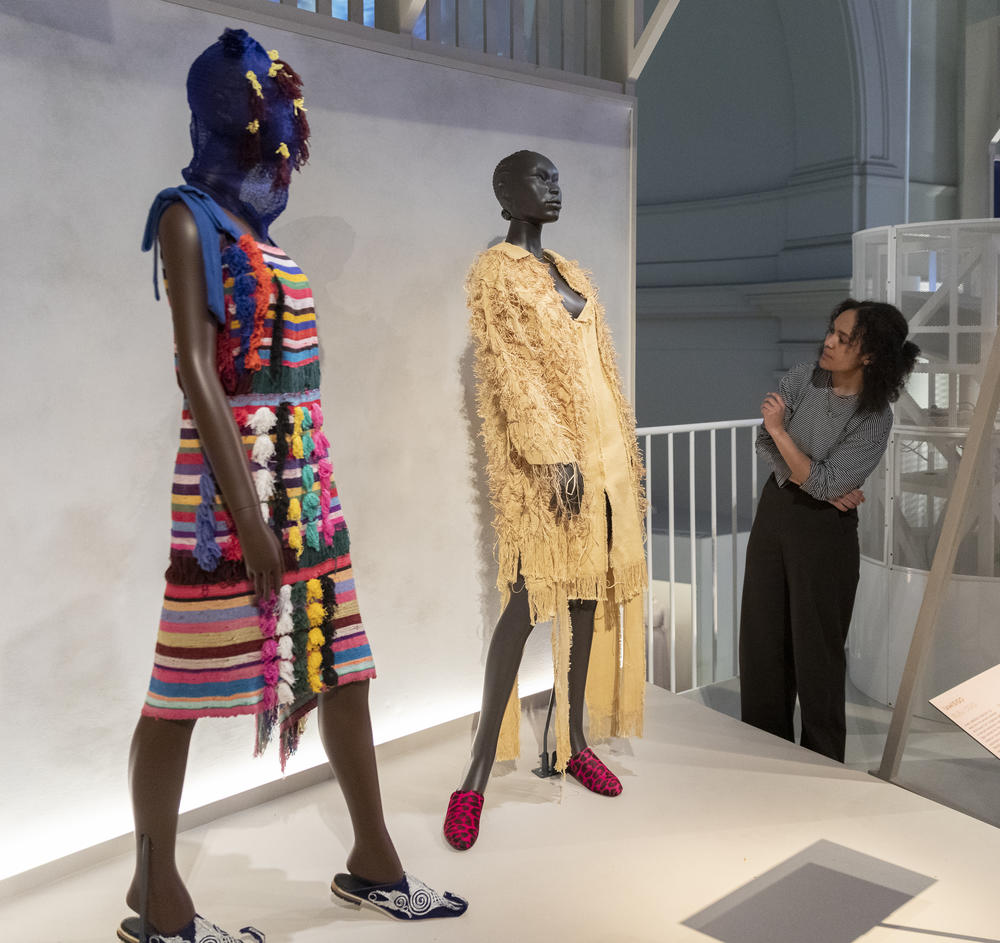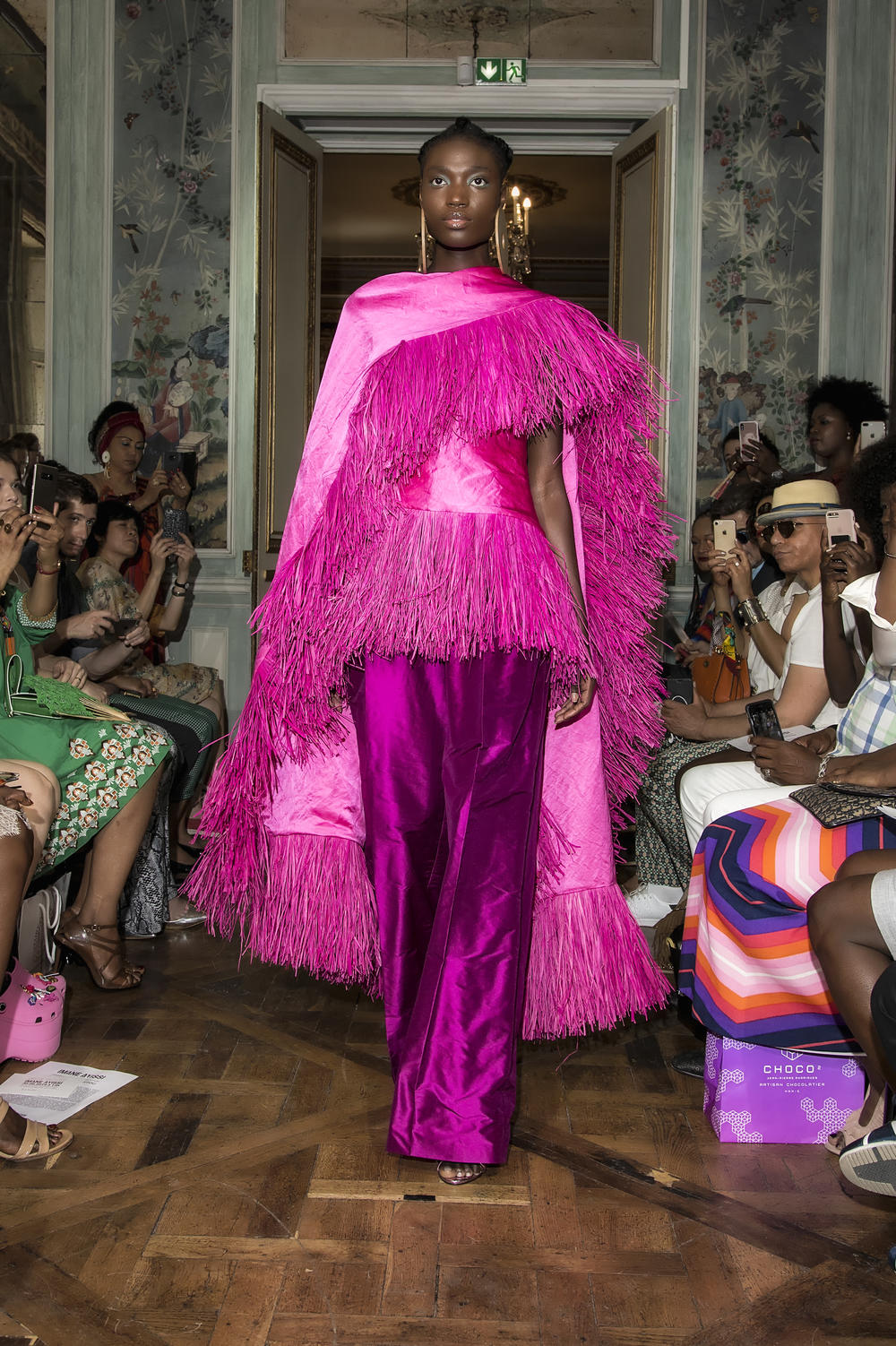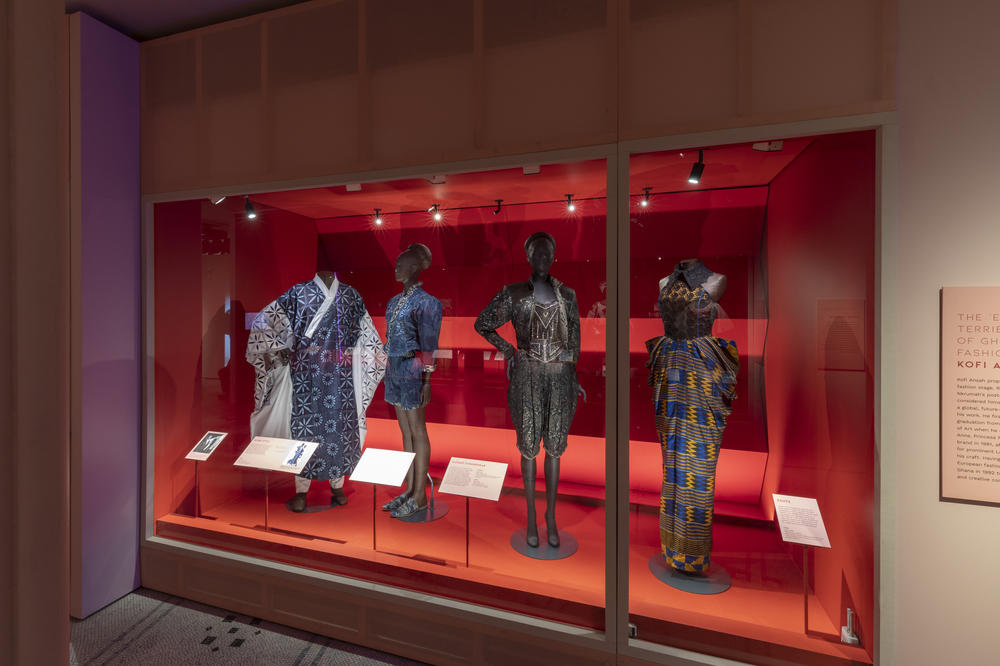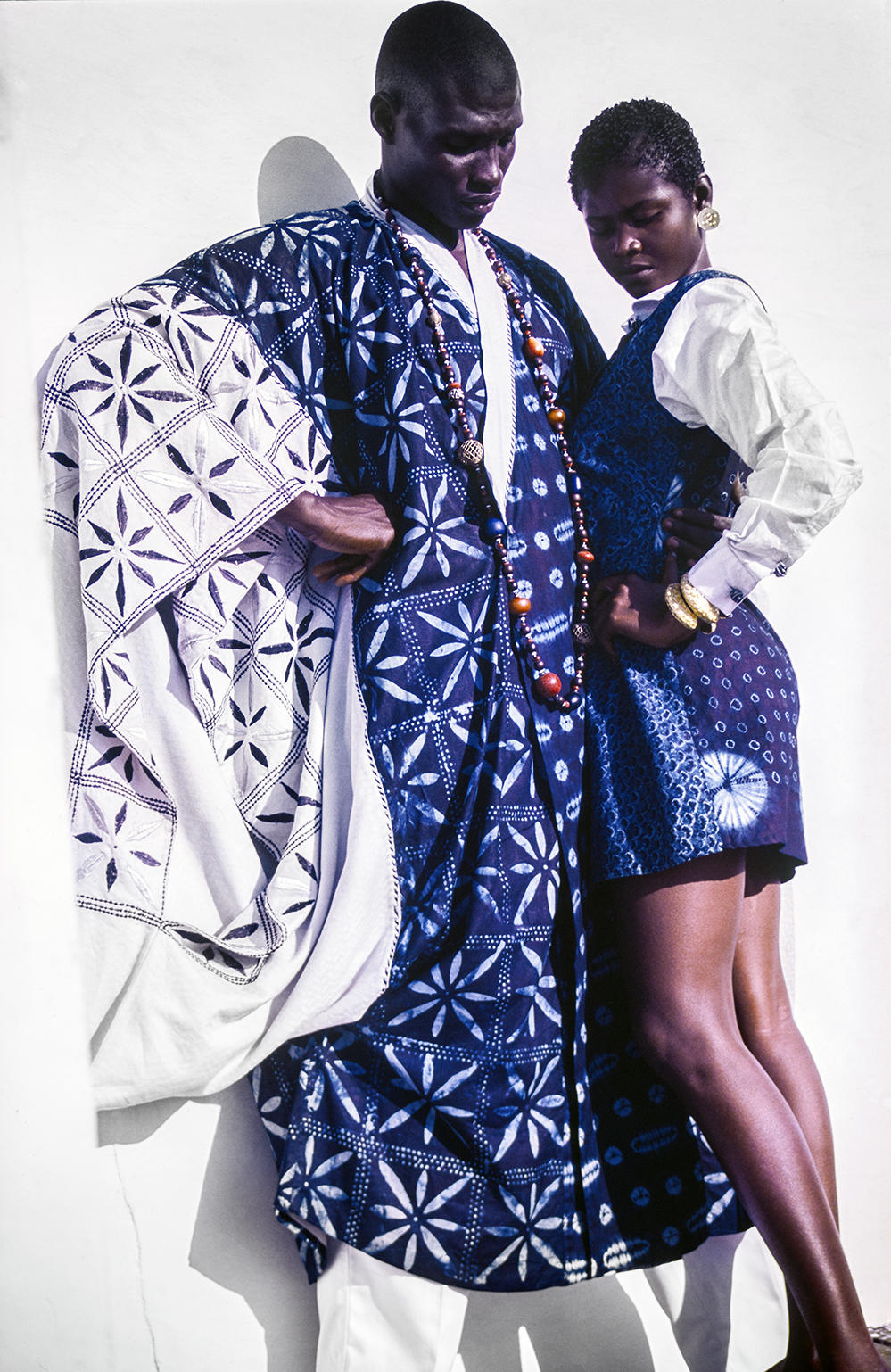Section Branding
Header Content
African fashion rules in British museum show, from chic dashikis to mud-dyed cloth
Primary Content
As I pass along a row of mannequins, the sharply tailored, pale blue cotton dashiki stops me in my tracks. Based on a long-sleeved open-necked, centuries old tribal costume, the garment has a sash draped gently from one shoulder to the other like a Roman toga.
The dashiki, part of the Intsinzi Collection from Rwandan design studio Moshions, first appeared on a catwalk in Kigali five years ago. Its graceful cut and clean lines struck me as youthful, elegant and yet deeply traditional. It would be equally at home in an urban or rural environment on a handful of continents.
Now it is part of a visually stunning exhibition at London's Victoria and Albert Museum entitled "Africa Fashion."
The two-level exhibition looks like a roundhouse inside one of the museum's rotundas and includes fashion pieces that range from eye-catching costumes and gowns to ordinary workday dresses. It makes the case that any list of global fashion powerhouses should include African designers — that fashion is not solely the purview of European design houses like Coco Chanel, Christian Dior or Yves Saint-Laurent.
The museum is also making amends for failures in its own collecting and curating practices that have have left vast gaps in its previous offerings around African culture and design.
In an irony of history, the museum is named for a monarch and her consort who presided over the longest expansion of the British Empire. The end of that colonial era in Africa brought not only sweeping political changes but a flowering of creativity in music, art — and fashion.
It is the renaissance and subsequent evolution of the continent's couture that the exhibition "Africa Fashion" seeks to assess and amplify.
Exhibit curator Christine Checinska herself worked for many years as a designer at several major British fashion labels before pursuing a Ph.D. in cultural studies at Goldsmiths' College in the University of London, with her thesis focused on the impact of Caribbean creole culture on British male dress. Ever since, she says, she has sought to explore the relationships between race, culture and cloth.
Checinska has been tasked with expanding the Victoria and Albert museum's permanent collection of African and African diaspora textiles and fashion.
"Across the board, there is recognition that we need to almost have a broader sense of — a broader vocabulary when we're curating," she told NPR, "to incorporate many of the different cultures that perhaps have been missing in the past and to recognize and revisit our own colonial history."
She hopes the show manages "to inspire and to encourage" visitors from all backgrounds but also to offer a glimpse of what she describes as "the genius of African creativity that all too often has been left out."
Below are a sampling of garments from the exhibition that she thinks exemplify African fashion itself and best represent the intention behind the show, which runs through mid-April 2023.
Chris Seydou brings flair — and mud — into haute couture
Seydou's stunning orange checkered suit and wide brimmed hat combination on display are emblematic of the Malian designer's ability to marry contemporary Western tailoring with African materials. Seydou lived in Burkina Faso and Ivory Coast before moving to Paris, where he worked for Yves Saint-Laurent in the 1970s before returning to West Africa to open his own atelier and launch his own line. He often used traditional patterned cloth like Mali's "bògòlanfini" — dyed with fermented mud — and not only marketed his designs across the region but further afield in Europe and the United States. He died in 1994.
IB Kamara, a Sierra Leone-born and London-based stylist who is now editor-in-chief of the magazine Dazed, stepped behind the lens to take three soulful black-and-white portraits of Seydou's clothes on a contemporary model. Kamara has long championed what curator Checinska calls "African heritage fashion." The intention of this Seydou display, Checinska says, is to mark the museum's own conscious celebration of African fashion through a refreshed collecting and curating strategy.
Bubu Ogisi marries fashion and politics
This Nigerian designer does not shy away from political statements in her works. For instance, she incorporates raffia from the Democratic Republic of Congo in this costume on the right to highlight Belgian exploitation in its former colony, where traditional weaving and manufacturing techniques were curtailed to service the foreign desire for products like rubber and ivory.
"Her work is research-based," Checinska explains. "She's sort of 'decolonizing her own mind' – and those are her words – through the deconstruction technique that she uses in her clothes," reimagining traditional styles and reinvigorating ancient materials commonly used in the pre-colonial era.
The curator says that from a purely design point of view she wants to include these two adjacent outfits in her selection for NPR. The one on the right is "exquisite," she says. "The proportion of the long jacket against the shift dress underneath, it's just wonderful fashion." On the dress on the left, meanwhile, Checinska highlighted elements drawn from a Nigerian masquerade tradition known as Egungun, pointing to the rows of multi-colored tassels attached to the front of the dress that create the kind of kaleidoscope effect found on the costumes worn by individuals in a community who act out the role of departed ancestors during ceremonies — a practice that continues in parts of West Africa and diasporas in the Caribbean and Brazil.
Imane Ayissi is a bold Cameroonian trailblazer in Paris
Ayissi is the first Black designer from sub-Saharan African to be included in the annual calendar of haute couture fashion shows, the founder of an eponymous Paris studio that melds traditional artisanal techniques from African countries – including Cameroon, Nigeria and Ghana – with cuts and designs that garnered critical acclaim from Milan to New York. A former ballet dancer and model who once graced catwalks for fashion giants like Givenchy and Valentino, he has sought to encourage an industry in his native Cameroon that produces various types of local textiles, like the raffia derived from palm leaves seen in this bold, backless pink design that wraps around the wearer.
In an interview with NPR, Ayissi emphasized how important local fashion is in Africa, that he wants it to become "a force that functions properly" on the international stage and that the exhibition would help to "educate" people about the continent.
A luxurious combo of past and present from Kofi Ansah
The Ghanaian designer studied at the Chelsea Art School in the U.K. before returning to his homeland, designing clothes with an emphasis on "luxury" as well as "exacting standards and attention to detail," Checinska says. His glittering jacket and shorts set with blue and white floral trim atop delicate buckled shoes (second from the left in the photo below) were first displayed at the Ivory Coast's embassy in London in the late 1980s and encapsulated an effort by the designer to bring the past — the printed fabrics, the ruffled neckline — with him into the new, the curator says, with the sequins and female shorts.
Throughout his career Ansah, who died in 2014, worked to mentor young talent back in Ghana, famously instructing them that, " 'West is not always best, inspiration is all around you,' " Checinska explains, quoting a phrase Ansah used. "There's a sense in which that feels part and parcel of what this show is, also."
Willem Marx is a London-based journalist.
Copyright 2022 NPR. To see more, visit https://www.npr.org.
